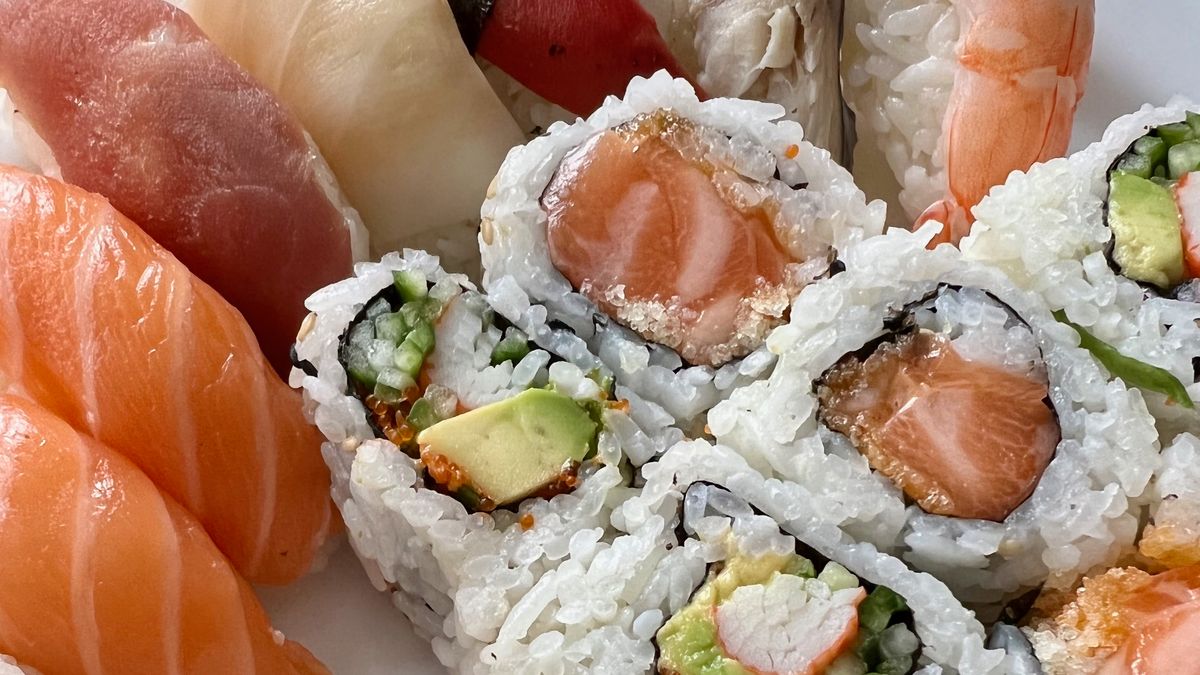Maackia 001: Sushi & Garden Design
I’m Nathan Langley and this is Maackia, a monthly newsletter that is starting to figure out what it wants to be when it grows up. Plants, photography, and design are likely topics.

I have been taking a deep dive into the world of Japanese cooking during my hibernation this winter and have become quite fond of the movie ‘Jiro Dreams of Sushi’. In it, I learned some of the more subtle ideas behind making sushi and I couldn’t help but think about the planting principles I have been digesting from the Dutch garden designer Piet Oudolf.
Eating at an authentic omakase sushi restaurant looks to be an interesting experience as there is no set menu - just what the chef serves that particular day. It is essentially you, the chef, and the sushi. Broken down further, you have a piece of sushi, which is comprised of rice, fresh fish, and often a sauce and/or garnish. From what I have learned, sushi is about the balance between individual ingredients, which creates a harmonious experience more enjoyable than the component parts.
The first thing I have been trying to process from Piet Oudolf is the idea of planting in large groups (called block planting) with three main components: primary, scatter, and matrix. Simply put, primary plants are the those that are typically used in a residential garden. They attract attention through their flowers and are the main plant component within a traditional garden design. Scatter plants, on the other hand, are used to add temporary contrast to other plant blocks. They differ from primary plants in that they are used to provide contrast for a short period of time and then fade into the background. For example: you could use a scatter plant that grows at a different time than the primary plant within a single block so that there is something of interest there when the primary plant is not at its peak. Finally, matrix plants are used in large numbers to fill in the spaces between the primary and scatter plants. For example: a savannah - it is primarily comprised of grass species but has other interesting species intermixed. Flowers do not seem to be a primary consideration with matrix plants as they are more about texture.
Here is how I connect sushi and garden design together:
- Fish = primary plants
- Sauce/garnish = scatter plants
- Rice = matrix plants
In an omakase restaurant, you are only given a specific piece of sushi once. The rice stays the same, but the fish and sauce/garnish will change between each serving. This creates a sense of spontaneity. But there is also cohesion through repetition. The rice is always the same. The fish will change, but you are still (usually) eating some kind of sea food. The sauce/garnish is also familiar even if their quantity or flavour changes slightly. Its function stays the same; it enhances the flavour of the fish and rice.
In the residential gardens that I encounter, harmony is largely absent. Instead, what I am presented with is a plant palette that moves from one flowering plant to the next as spring moves to summer and ultimately fall. Matrix plants are not used. Plant groups are largely kept separate from each other and are never touching - no touching! Few, if any, scatter plants are employed. The total number of plant species used is also kept small. Different cultivars, or closely related plants, are not typically found within the garden.
I admit, sashimi (just raw fish) is very tasty, but it is not a meal. Gardens that only use primary plants tend to become stale with time. It is the same small number of plants flowering at roughly the same time each year. There isn’t a lot there to heighten the beauty of the primary plants used or provide interesting contrast at lulls in a particular season, and there certainly isn’t a cohesive structure used throughout the garden that ties everything together. It is just a small number of plants vying for attention until they slowly fade away.
The part I find truly amazing about sushi is how seemingly simple components can be joined to create an experience beyond what you would expect. To me, harmony’s essence within a garden is the connection between plants. Gardens should strive to be more than just their flowers or colours. The natural world has so much more to offer if we take some time to look and think about the plants we are using together. What if instead of seeing a garden and going “I love that plant - I should add it to my garden!” we stop and think about the way a garden makes us feel - how the component parts join together to create something more enjoyable. For example: “What relationships are present within this garden that create the feeling of wonder and relaxation I am currently enjoying?” If you are saying to yourself “Most gardens don’t make me feel anything” maybe stop for a moment and reflect on that thought a little more deeply.
I think the three different components Piet Oudolf talks about in his writing are a good foundation to build from. Matrix planting in particular is something that I am interested in experimenting with at different scales. The heavy use of one plant is a fantastic way to set a consistent tone/feeling throughout a larger space. Adding in scatter plants to that matrix with pockets of primary plants, for example, would be a straightforward way to also add a sense of movement and energy. Creating a garden like this at my own home will be my main focus this season.
I just have to wait until the snow finally melts.
Until next time,
Nathan